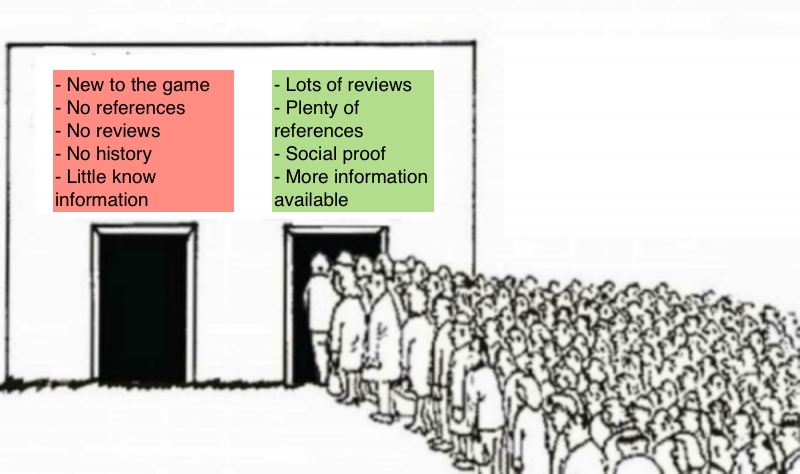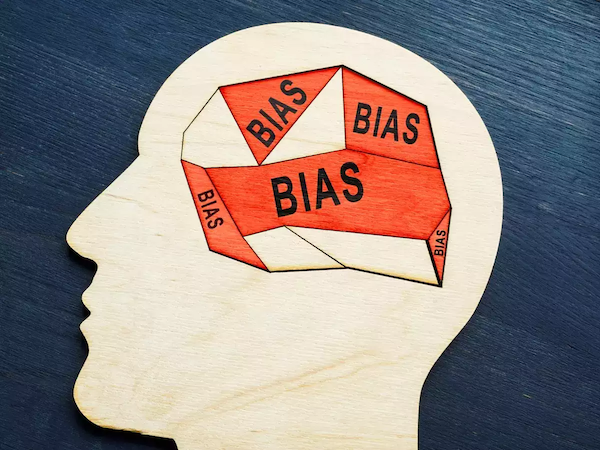TL;DR
Whom am I speaking to? Who is this going to help?
My Practical Experience
My Mind Dump.
List of cognitive biases to study from Scott Adams’ book “How to Fail at Almost Everything and Still Win Big”
Ambiguity effect

In one sentence: We prefer options that are known/familiar to us
The ambiguity effect is a cognitive bias that describes how we tend to avoid options that we consider to be ambiguous or to be missing information. We dislike uncertainty and are therefore more inclined to select an option for which the probability of achieving a certain favorable outcome is known.
The consequences of this bias is that we often forget to give equal weight to the possibility that the result of taking a risk could actually be positive.
The ambiguity effect can prevent us from giving two viable options equal consideration, which leads to a biased decision making.
We may automatically decide against something based solely on the fact that we feel that putting our trust in the unknown is too risky. Engaging in this cognitive bias limits us, as it prevents us from reaping the long-term benefits of riskier decisions that could have high returns.
While this is similar to the concept of risk aversion, the two biases are distinguished by how much information the decision-maker has; the ambiguity effect occurs when we know the probability of a certain outcome for only one of the available options, while risk aversion occurs when we know both probabilities and gravitate towards the option with a smaller payoff but greater likelihood of success.
This strategy occurs automatically and effortlessly, and can help you reach a conclusion quickly. Heuristics have endured for as long as they have because they are often right. However, by using them, we risk drawing a conclusion that is inaccurate or misinformed, because we fail to use logic and reason.
To an extent, the ambiguity effect is an adaptive response. People prefer options that they feel well-informed about to options that they feel leave too much to the imagination. This can be useful for avoiding options for which we genuinely have too little information to go on. Even better, the ambiguity effect can lead us to seek out more information about the ambiguous option, so as to make a more informed decision.
While using this heuristic certainly makes decision-making easier, it is not nearly reliable, nor effective, enough for it to be used in all situations.
An example of the ambiguity effect taking place is when purchasing an item online; the item with only 3/5 starts, but 25,000 reviews is more likely going to be selected by the customer (due to having more data on that product) than a new product that has no reviews whatsoever; the customer would rather choose the product that they know more about, because it feels like the safer move.
Failing to provide your clientele with information that your competitors make readily available can cost you greatly.
If they can buy a product from somewhere else, without having to gamble on certain outcomes, people will decide against taking the risk of shopping with you.
This is where having “social proof” like social media can aid in your appearance as someone who is trustworthy.
The phrase, “better the devil I know than the devil I don’t” also applies to this bias as well.
References:
Anchoring
- Availability heuristic
- Availability cascade
- Backfire effect
- Bandwagon effect
- Barnum effect
- Base rate neglect (base rate fallacy)
- Belief bias
- Bias blind spot
- Choice-support bias
- Clustering illusion
- Confirmation bias
- Congruence bias
- Conjunction fallacy
- Conservatism (regressive bias)
- Conservatism (Bayesian)
- Contrast effect
- Curse of knowledge
- Decoy effect
- Denomination effect
- Distinction bias
- Duration neglect
- Empathy gap
- Endowment effect
- Essentialism
- Exaggeration expectation
- Experimenter’s (Expectation) bias
- False-consensus effect
- Functional fixedness
- Focalism
- Focusing effect
- Forer effect
- Framing effect
- Frequency illusion
- Gambler’s fallacy
- Hard-easy effect
- Hindsight bias
- Hostile media effect
- Hyperbolic discounting
- Illusion of control
- Illusion of validity
- Illusory correlation
- Impact bias
- Information bias
- Insensitivity to sample size
- Irrational escalation
- Just-world hypothesis
- Less-is-better effect
- Loss aversion
- Ludic Fallacy
- Mere exposure effect
- Money illusion
- Moral credential effect
- Negativity bias
- Neglect of probability
- Normalcy bias
- Observer-expectancy effect
- Omission bias
- Optimism bias
- Ostrich effect
- Outcome bias
- Overconfidence effect
- Pareidolia
- Pessimism bias
- Planning fallacy
- Postpurchase rationalization
- Pro-innovation bias
- Pseudocertainty effect
- Reactance
- Reactive devaluation
- Recency bias
- Recency illusion
- Restraint bias
- Rhyme as reason effect
- Selective perception
- Semmelweis reflex
- Selection bias
- Social Comparison bias
- Social desirability bias
- Status quo bias
- Stereotyping
- Subadditivty effect
- Subjective validation
- Survivorship bias
- Texas sharpshooter fallacy
- Time-saving bias
- Unit bias
- Well-traveled road effect
- Zero-risk bias
- Zero-sum heuristic
As well as Social biases:
- Actor-observer bias
- Defensive attribution hypothesis
- Dunning-Kruger effect
- Egocentric bias
- Extrinsic incentive bias
- Forer effect (Barnum effect)
- False-consensus effect
- Halo effect
- Illusion of asymmetry insight
- Illusion of external agency
- Illusion of transparency
- Illusory superiority
- Ingroup bias
- Just-world phenomenon
- Moral luck
- Naive cynicism
- Outgroup homogeneity bias
- Projection bias
- Self-serving bias
- System justification
- Trait ascription bias
- Ultimate attribution error
- Worse-than-average effect
Many Errors and Biases:
- Bizarreness effect
- Choice-support bias
- Change bias
- Childhood amnesia
- Conservatism (regression bias)
- Consistency bias
- Context effect
- Cross-race effect
- Cryptomnesia
- Egocentric bias
- Fading affect bias
- False memory
- Generation effect (self-generation effect)
- Google effect
- Humor effect
- Illusion-of-truth effect
- Lag effect
- Leveling and sharpening
- Levels of processing effect
- List-length effect
- Misinformation effect
- Misattribution
- Modality effect
- Mood congruent memory bias
- Next-in-line effect
- Osborn effect
- Part-list Cueing effect
- Peak-end rule
- Persistence
- Picture superiority effect
- Placement bias
- Positivity effect
- Primacy effect, Recency effect, and serial position effect
- Processing difficulty effect
- Reminiscence bump
- Rosy retrospection
- Self-relevance effect
- Self-serving bias
- Source confusion
- Spacing effect
- Suffix effect
- Suggestibility
- Subadditivty effect
- Telescoping effect
- Testing effect
- Tip of tongue phenomenon
- Verbatim effect
- Von Restorff effect
- Zeigarnik effect
